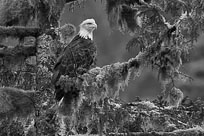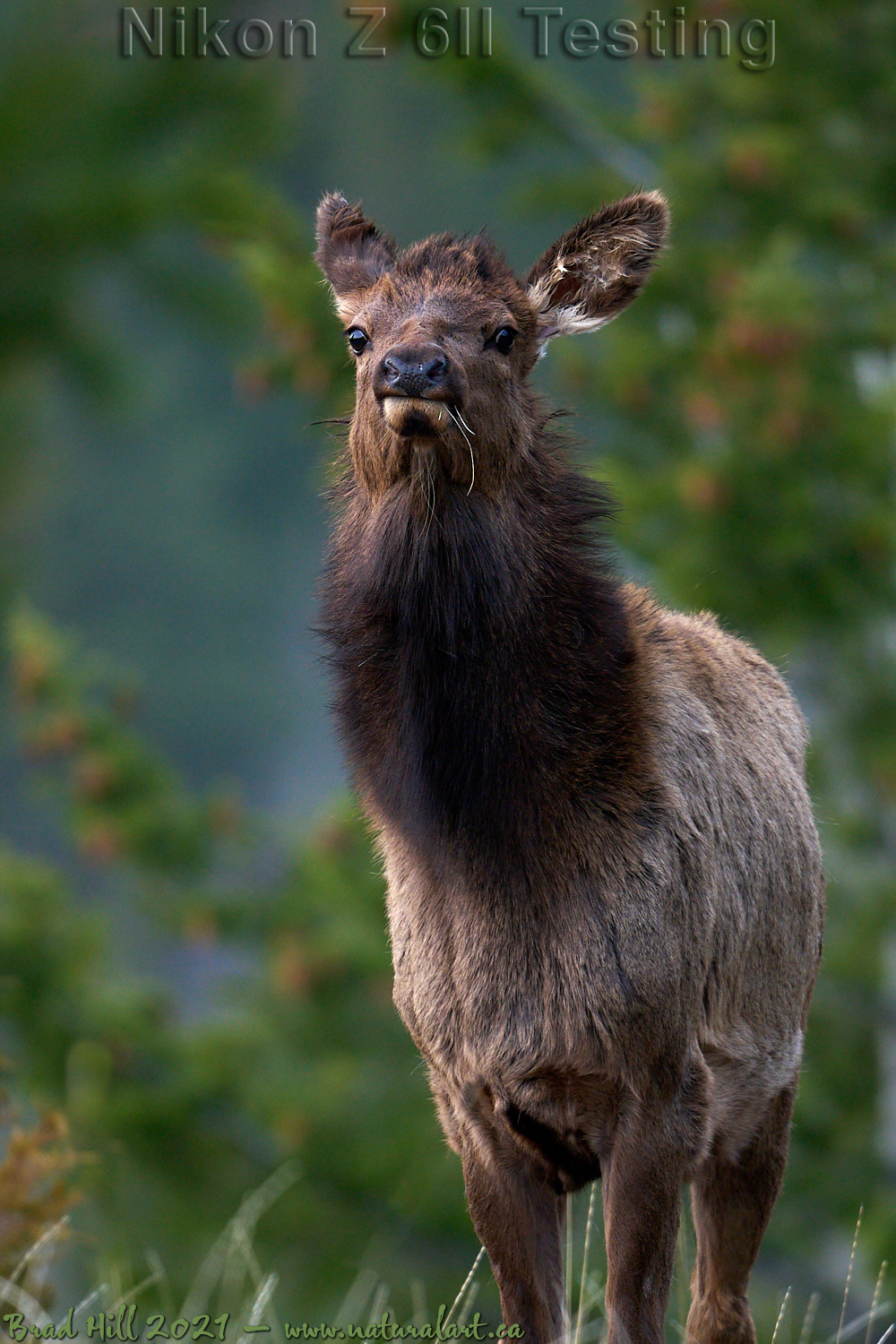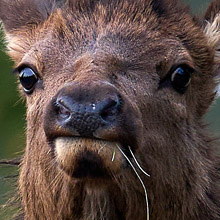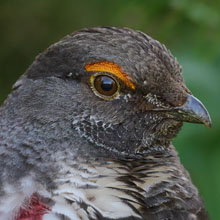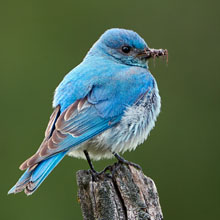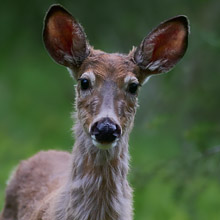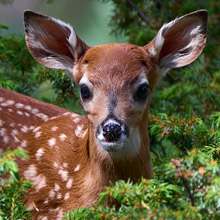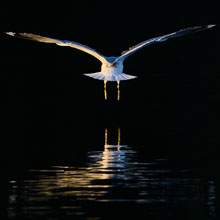Availability: Undetermined - Enquiries?
In the Field
Z 6II Testing - Who's Going to Blink First? Findlay Creek Region (East Kootenays), British Columbia, Canada. April 1, 2021.
This is my seventh gallery post detailing my experiences with shooting wildlife using the Nikon Z 6II. This is another shot captured during one of my sunrise "camera walks" I do around our property four or five times per week. In this situation I had literally stumbled upon a small herd of elk and, owing just to dumb luck, ended up both almost surrounded by them and much closer to them than the wary elk normally permit (this population is hunted annually, and we have a fair number of four-legged predators around...leaving the elk in a perpetual state of high attentiveness).
When I first noticed the elk I raised my camera (a Z 6II with 500mm PF lens attached) up and then froze. I also quickly switched my camera over to Silent photography mode using my iMenu. After a few minutes (when I was shooting a few of the other elk) this yearly elk wandered out from behind a small bush and approached me...clearly trying to suss out what the funny colored stump with the big eye was. Because I was in Silent photography mode I was able to shoot away as it approached without bothering it one bit (I had no reason to believe the young elk heard the shutter). Eventually another of the elk that was nearby stomped off (for reasons unknown to me as I couldn't budge to watch the other elk) and this one got spooked and ambled away as well. I'm not sure if this youngster ever figured out if I was a human or not...and I'm pretty sure I didn't blink first! ;-)
The encounter highlighted a couple of "gear things" worth relating. The first pertains to the Silent photography mode (AKA full electronic shutter mode) of the Nikon Z 6II (and Z 7II). Despite its name Silent photography mode isn't 100% silent...there is a VERY slight muted sound when you release the shutter - but unless you're shooting in nearly silence you're not likely to hear it (and if someone/something else is more than about 10 cm from the camera they are not likely to hear it). And, as I've mentioned previously, the faint sound the camera makes when shooting in Silent photography mode is very slightly louder if one is shooting with a FTZ adapter. But it's still incredibly quiet - I've now used it (in conjunction with the FTZ adapter) when working very close to deer, elk, chipmunks, squirrels, all sorts of different birds, and more and have never seen any indication whatsoever that they heard the shutter. In contrast, I could list dozens of times where I have had to quit shooting wildlife (especially grizzly bears) because the shutter sound (even when using "Quiet mode") was clearly bothering the subject. Silent photography mode is a tangible breakthrough with significant real world consequences for a wildlife photographer.
Is there anything I DON'T like about Silent photography mode? About the only thing I can think of (and the primary reason I wouldn't just leave my camera in Silent photography mode all the time) is that if I am shooting in Continuous High Extended frame rate mode I get no obvious feedback how many shots I have captured in a burst (or, for that matter, if there is any ambient noise, if I have captured any shots at all). Not a big deal - where's that image black-out when you need it? ;-)
The other "big picture" comment this image makes me think of is how darned much I am enjoying using the Z 6II (complete with MB-N11 battery grip) paired with the 500mm f5.6E PF for wildlife shooting. Light, compact (for a 500mm), easy to carry, easy to hand-hold at even slow shutter speeds, great optical quality, great compatibility with the 1.4x and 2x (series III) teleconverters, great low-light AF and high ISO performance...it just ticks all the boxes! What's not to like about this combination? Oh yeah...and it's even pretty affordable.
Here's a larger version (2400 pixel) of this super curious young elk:
• Who's Going to Blink First? Download 2400 pixel image (JPEG: 1.6 MB)
ADDITIONAL NOTES:
1. This image - in all resolutions - is protected by copyright. I'm fine with personal uses of them (including use as desktop backgrounds or screensavers on your own computer), but unauthorized commercial use of the image is prohibited by law. Thanks in advance for respecting my copyright!
2. Like all photographs on this website, this image was captured following the strict ethical guidelines described in The Wildlife FIRST! Principles of Photographer Conduct. I encourage all wildlife photographers to always put the welfare of their subjects above the value of their photographs.
Behind the Camera
Z 6II Testing - Who's Going to Blink First? Findlay Creek Region (East Kootenays), British Columbia, Canada. April 1, 2021.
Compressed RAW (NEF) 14-bit format; ISO 560.
Nikon Z 6II paired with Nikkor 500mm f5.6E PF. Hand-held. VR on and in Sport mode. Single Point Area AF area mode.
1/100s @ f5.6; -0.3 stop compensation from matrix-metered exposure setting.
At the Computer
Z 6II Testing - Who's Going to Blink First? Findlay Creek Region (East Kootenays), British Columbia, Canada. April 1, 2021.
RAW Conversion to 16-bit PSD file (and JPEG files for web use), including all global and selective adjustments, using Phase One's Capture One Pro 21. Global adjustments on this image were limited to a single tweak to shadows (darkening them). Selective local adjustments performed using Capture One Pro's layers and masking tools. In this case selective adjustments were made on 4 separate layers and included one or more tweaks to shadows, blacks, clarity, and sharpness.
Photoshop modifications were limited to the insertion of the watermark and/or text.
Conservation
Z 6II Testing - Who's Going to Blink First? Findlay Creek Region (East Kootenays), British Columbia, Canada. April 1, 2021.
Species Status in Canada*: This species is not designated as at risk.
Elk (Cervus elaphus) are the second largest member of the deer family in British Columbia (and in North America). Rocky Mountain Elk (of the Cervus elaphus nelsoni subspecies) like to forage in a mix of grasslands and shrublands or in mixed coifer and deciduous forests. Elk are highly social mammals and their herding behaviour is thought to be an anti-predator strategy - with more eyes watching each individual Elk can spend a greater proportion of their time foraging. In British Columbia wolves are the main predators of all age and sex classes of Elk. Cougars will also prey on Elk of all ages, and both Grizzly and Black Bears prey primarily on the young of the year.
Elk are now common again in much of western North America - in fact Elk now are found in more habitats and in higher numbers (approaching a million animals) than any other time since 1900. The future on Elk populations in North America seems secure.
*as determined by COSEWIC: The Committee on the Status of Endangered Wildlife in Canada










